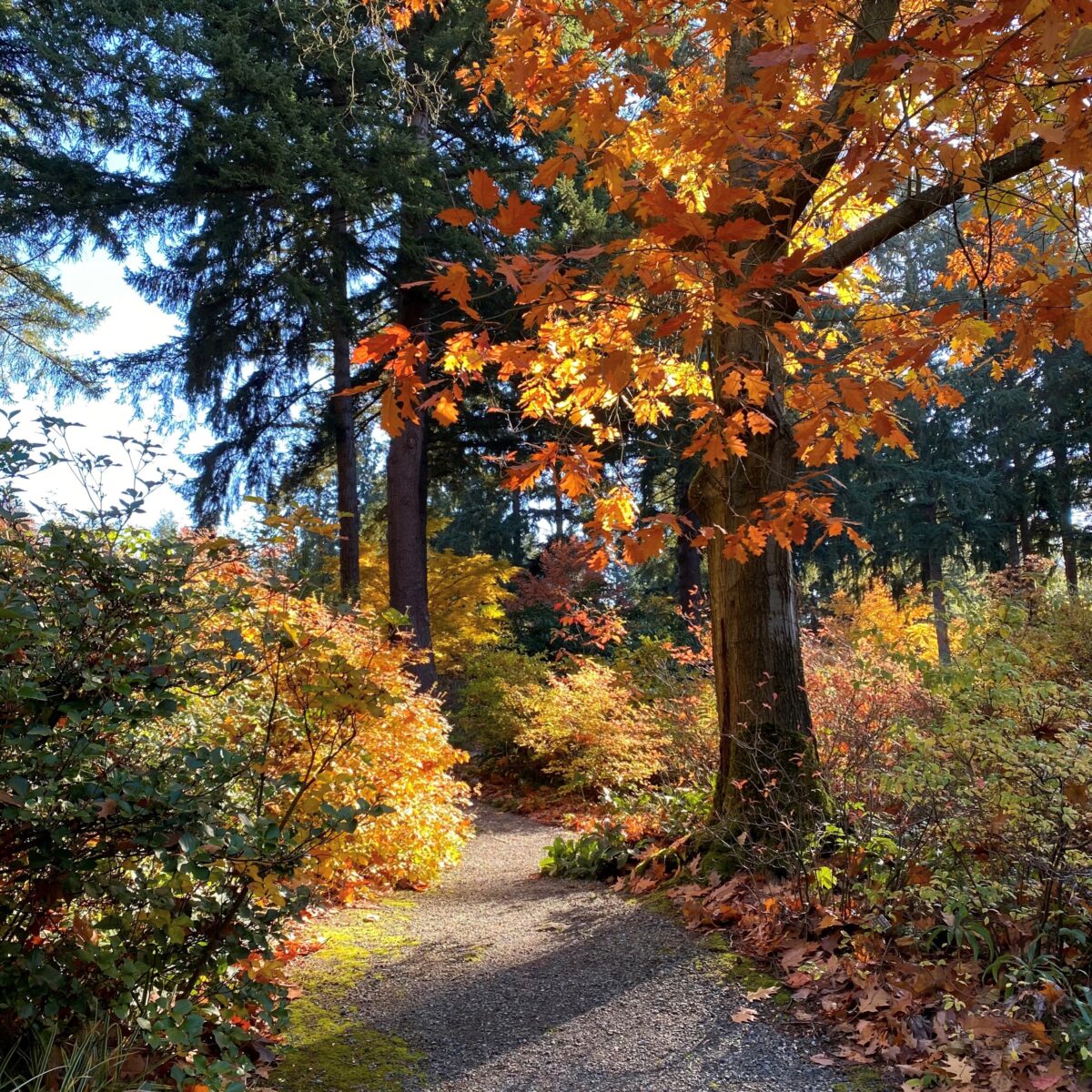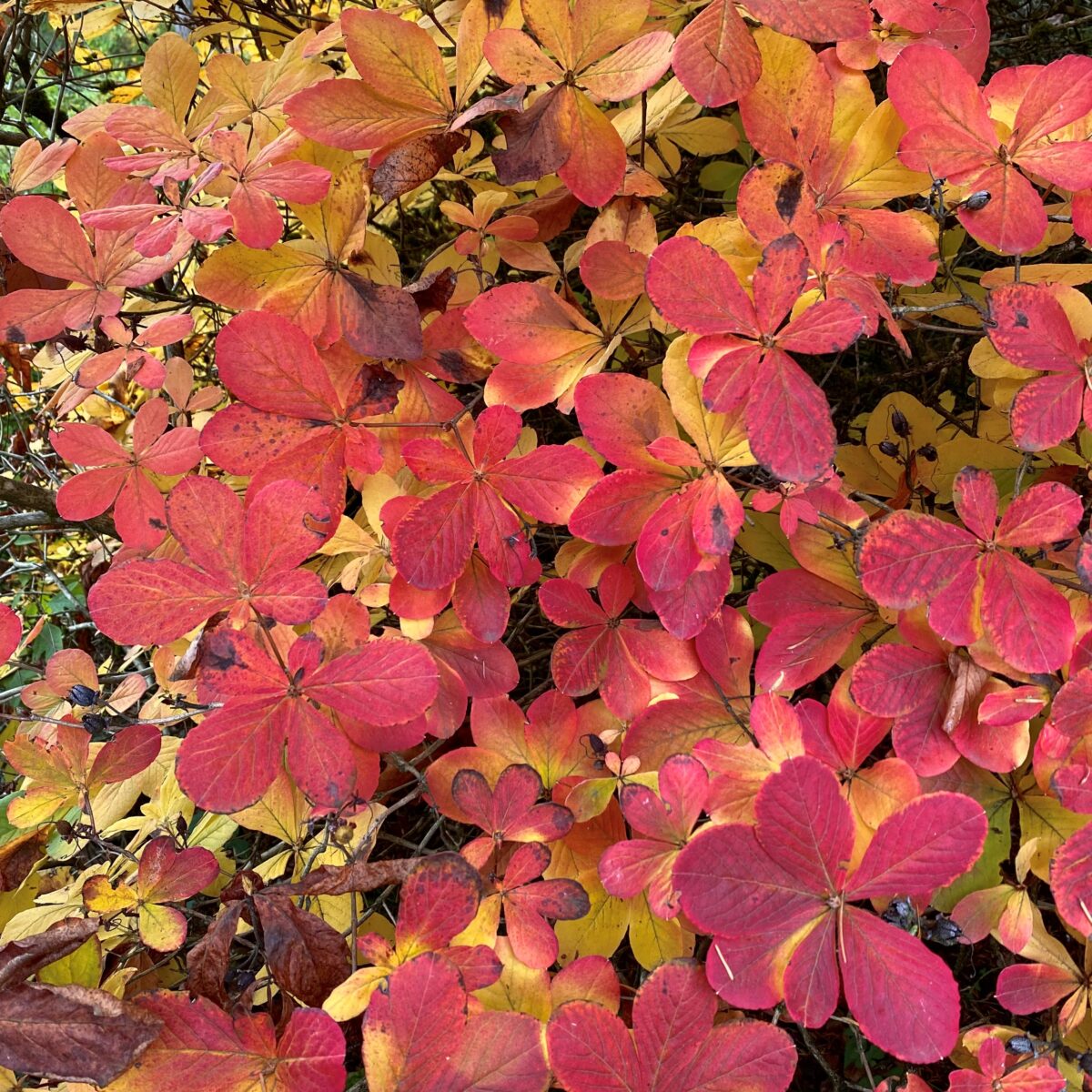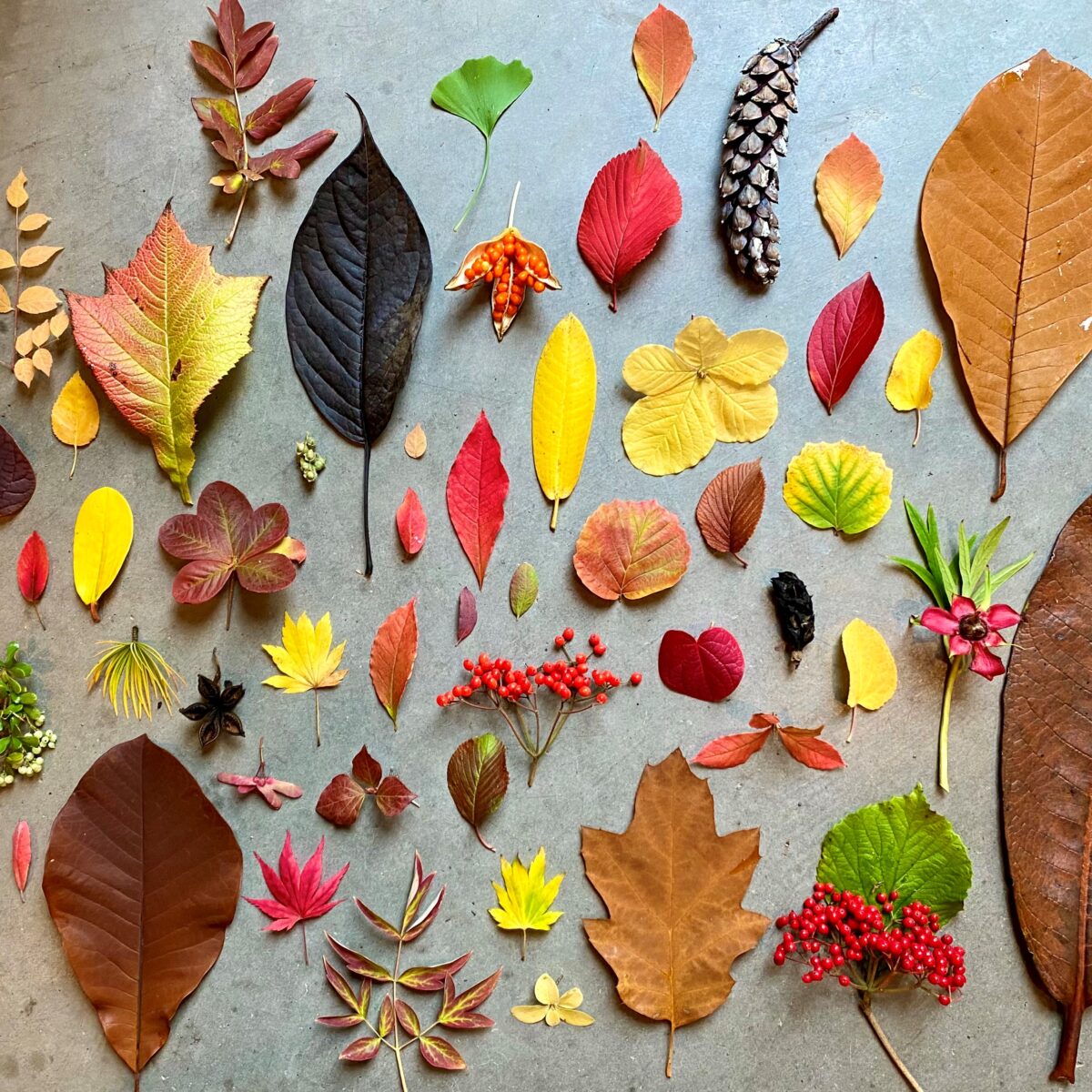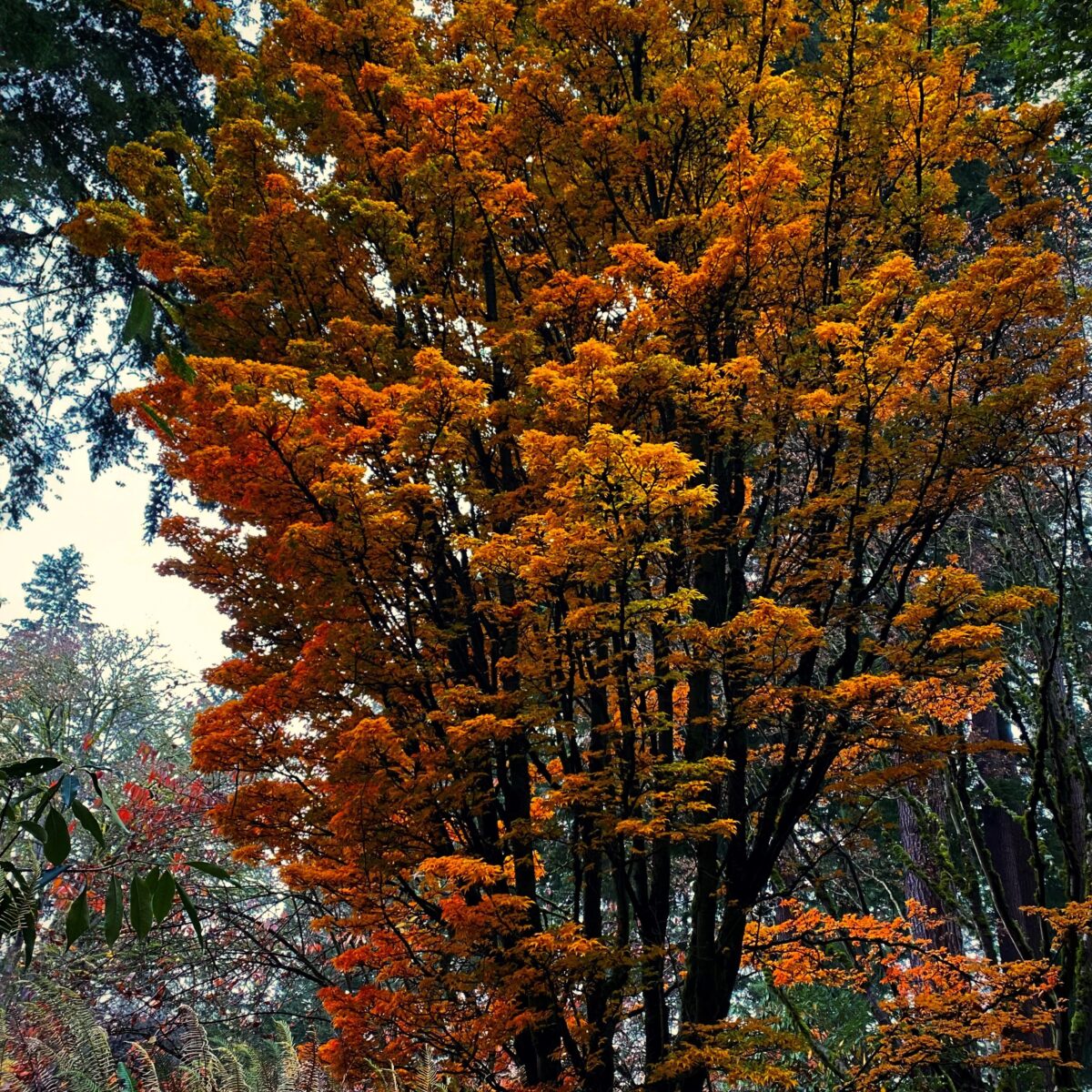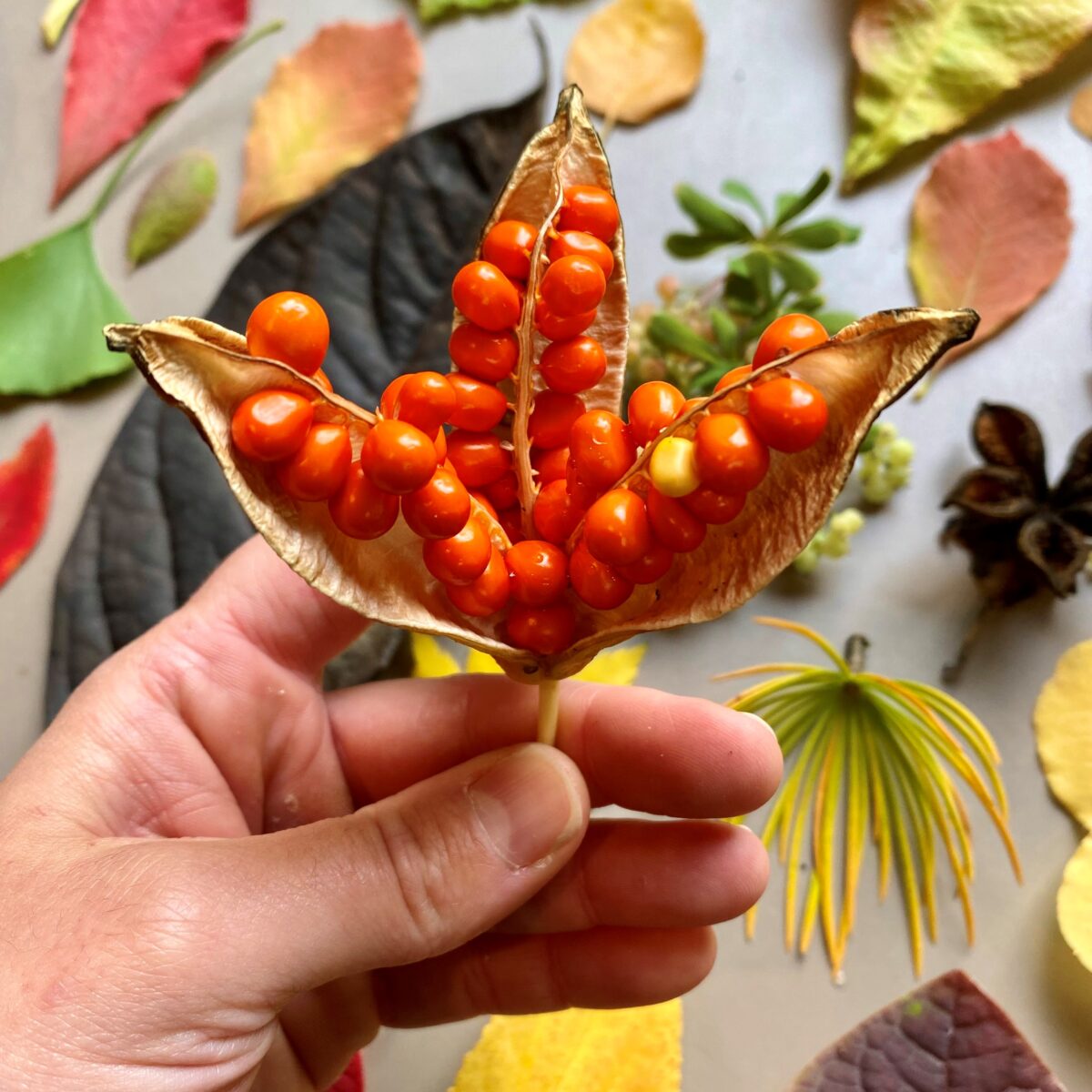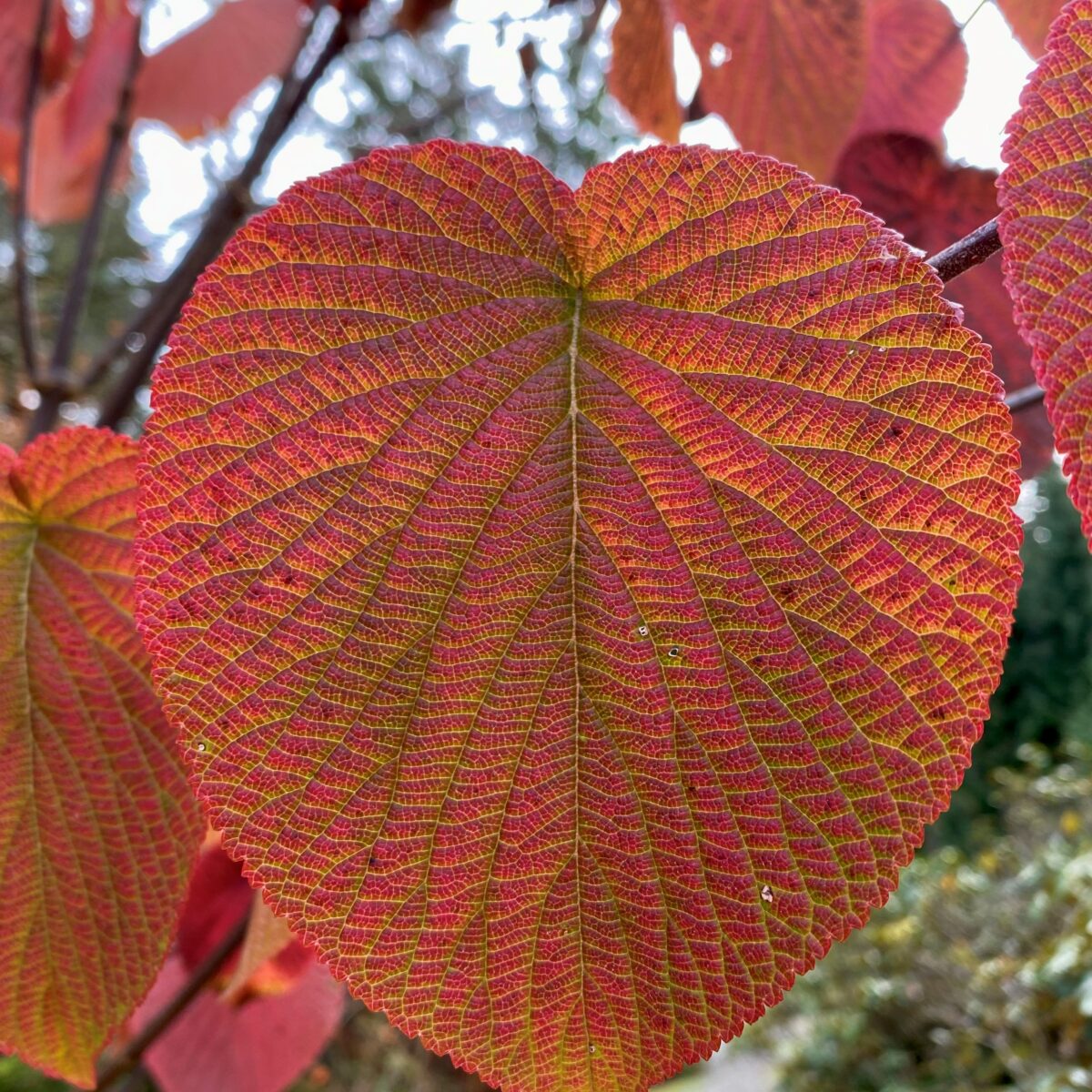By RSBG Assistant Nursery Manager Emily Joseph
November, the month when even the drive along Weyerhauser Way invites you into the garden through a tunnel of deciduous color intermixed among a backdrop of evergreens. Native big leaf maples (Acer macrophyllum), vine maples (Acer circinatum), and black cottonwood (Populus trichocarpa) are ablaze in shades of yellow, orange, and red. If you come early enough, the morning fog may still be settled in the valley of the meadow, masking the surrounding roads and leaving all obscured but the path ahead and an outline of trees surrounding you.
Throughout the garden, the colors of autumn are on full display in a succession of fiery tones darkening to rich browns once the leaves have dropped and begun to decay among the paths. Take a walk and you will likely find yourself crunching through the discarded large, rounded foliage of the Japanese bigleaf magnolia (Magnolia obovata) in the Upper Woodland, or the deep mahogany red and yellow leaves of the Stewartia pseudocamellia and rostrata planted between the May Garden and the Blue Poppy Glade. Even the red oak (Quercus rubra) at the corner of the Azalea Collection has begun to shed its saddle brown leaves with sharply pointed teeth.
Comprised of deciduous and evergreen species from around the globe, the Azalea Collection is a must see as you ramble through the garden. Drifts of deep brick red backlit by gold and bronze bring color and energy to the quieting landscape. Behind the conservatory, the dwarf Rhododendron mucronulatum ‘Crater’s Edge,’ has ignited into mounds of glowing red. Just around the corner, Rhododendron schlippenbachii is now in full glory as the outer leaves most exposed to sun take on shades of salmon and claret, while the inner foliage remains a rich honey. Across the path, the rounded diamond shaped foliage of Japanese three-leaved azaleas like Rhododendron mayebarae have darkened to match the jammy tones of a deep merlot.
This late in the autumn, much of the fall color comes from the Japanese maple collection as it takes center stage among the woodland garden. Over 50 varieties and cultivars have been planted to provide the perfect accompaniment to the Rhododendron collection. A few standout favorites include Acer palmatum ‘Pixie’ with its dark red-black leaves and Acer palmatum ‘Villa Taranto’ an upright form of fine narrow-leaved maple that turns a rich persimmon orange before deepening to red. Early to color were the Acer shirasawanum ‘Aureum,’ golden full moon maples lighting up both the stumpery and the back edge of the pond, while Acer palmatum ‘Shishigashira’, a strongly fastigiate form of lion’s head maple is one of the last maples to turn a rich golden yellow in the upper woodland.
Another subcollection of the garden that exhibits captivating characteristics in autumn is the genus of Viburnum. Many people may know these utilitarian shrubs for the readily available and easy-going plants often found in landscapes, though as a large genus, there are numerous unique species rarely seen in cultivation. Viburnum nervosum and Viburnum furcatum both display palm-sized or larger heart shaped leaves with a deeply veined texture and fall colors of metallic bronze, gold, and copper. Some species, though demure in foliage, produce an incredible display of brightly colored fruit. Viburnum betulifolium yields masses of berries held in pendulous clusters starting a pale lustrous pink in September darkening to bright red by November. But the jewel-like fruits found throughout the garden on a variety of genera rarely last as birds, mice, and squirrels all hurry to devour these seasonal treats.
All around the garden, plants have been subtly shifting from stages of growth towards their winter dormancy. Scattered among the fallen leaves, all manner of flowering and fruiting structures have ripened and split to bear the priceless reproductive material needed for these plants to propagate naturally. The coral-colored bead like fruit of the stinking iris (Iris foetidissima) is a welcome yearly reminder of the season’s fertility. A daily or weekly walk amidst this botanical bounty will unearth countless treasures. Yet every day brings new seasonal changes to the garden while winter waits silently to settle in for the next several months as we anxiously anticipate spring.
- Japanese Maples in the Upper Woodland
- Quercus rubra in the Azalea Collection
- Rhododendron schlippenbachii
- Seeds and leaves
- Acer palmatum ‘Shishigashira’
- Iris foetidissima fruit
- Viburnum nervosum


